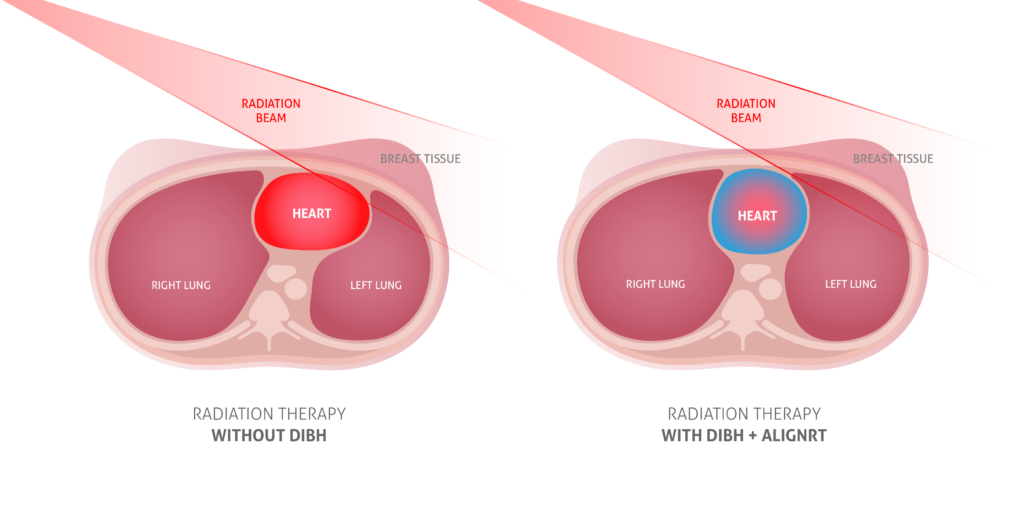Left-Breast Cancer Patient’s Side Effect Risks
Radiation therapy has been shown to be a highly effective treatment for breast cancer, but the left breast is close to the heart, which leaves the heart at risk of radiation exposure. This has been shown to sometimes lead to post-treatment heart conditions¹ like heart disease and heart attacks.
Taking a deep breath moves the heart down and away from the breast to reduce the radiation exposure during treatment. This technique is referred to as Deep Inspiration Breath Hold (DIBH). AlignRT® monitors your breath hold and positioning and tells your treatment team when your breast is in the right position so they can turn the radiation beam on. It is important to seek treatment at a center that uses AlignRT®+ DIBH to help protect your heart during treatment and prevent long term side effects.

